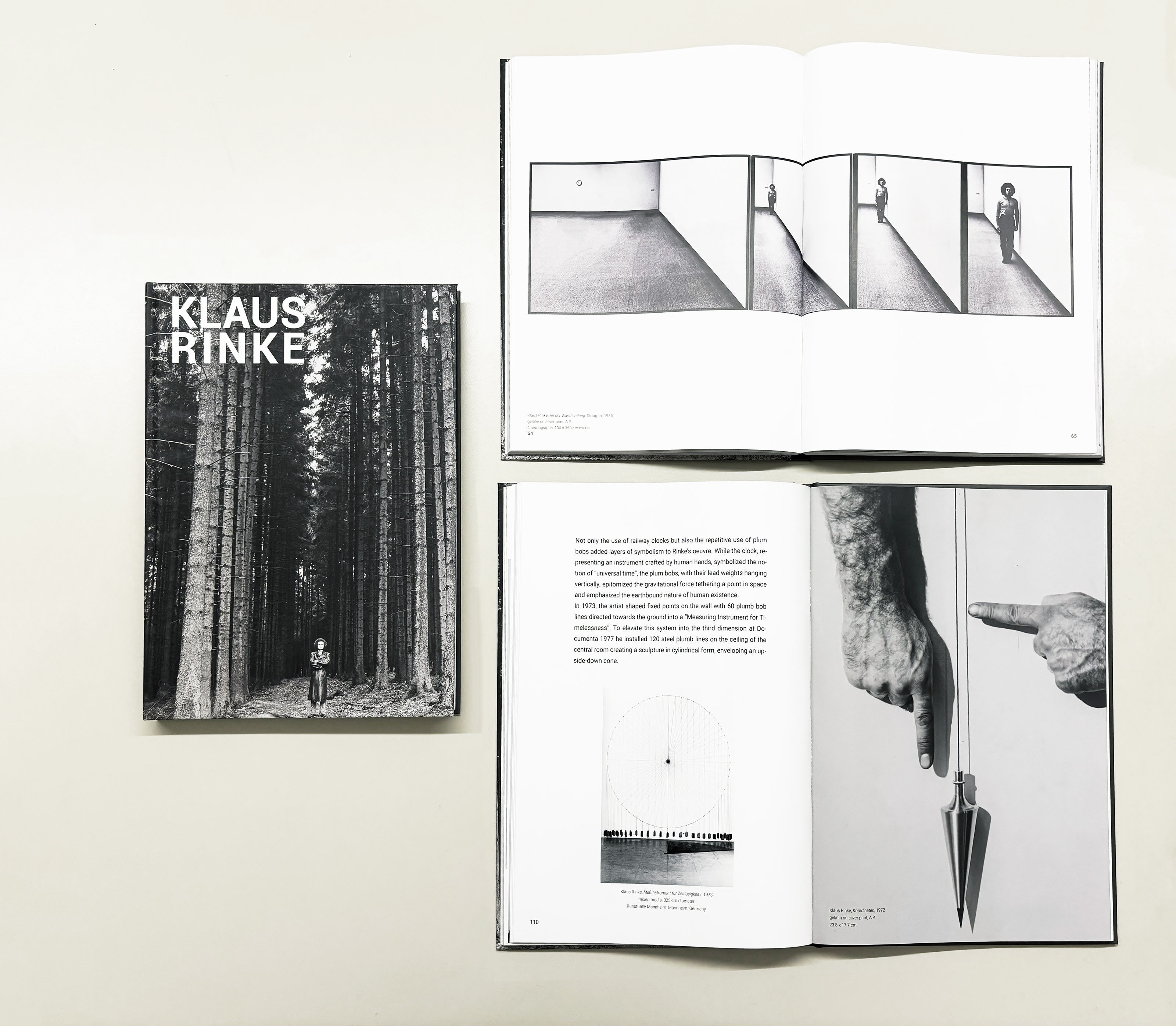"I am a German, but not a German artist! I'm a universal artist, in the sense that ideas of ethnicity don't interest me in the least. That's all you hear about now, all over the world. Look where it leads: war everywhere! In the early 1970s, the world was out looking to discover the world; now everybody's retreating to his little patch of dirt. It's a return to the Middle Ages. The archaic heroism of a pseudo-German art means nothing to me. I'm a German, I'm an Australian, I'm an American, I'm a European, I'm a fish, I'm a cactus. I'm a tree, I'm a rain, I'm snow, I'm everything. The world has grown so small today that I'm everywhere."

Klaus Rinke is a universal artist who cannot be considered from a one-dimensional standpoint. He is a draughtsman, painter, sculptor, photographer, philosopher and an artist of aqueous mediums and landscapes, of the human body, action painter, an artist of words, concepts and philosophy [1]. His work is integral to the radical artistic movements that emerged during that period, which include Performance Art, Body Art, Land Art, Conceptual Art, Process Art and Action Art.
Rinke is also credited with creating the renowned "Düsseldorf Scene" and the Düsseldorf Academy of Art, where he lectured thirty years. In 1968 he conceived the idea of uniting some young Düsseldorf artists for an exhibition at the Kunst Museum of Lucerne along with art historian Jean Christophe Ammann [2]. The show was titled "The Düsseldorf Scene" and the artists featured in the show included Joseph Beuys, Jorg Immendorf, Imi Knoebel, Blinky Palermo, Sigmar Polke, Gerhard Richter and Klaus Rinke.

In late Sixties, Rinke abandoned painting for sculpture in order to work in three dimensions, then, moved from sculpture to photography using his own body as a central element. This "physical" experience of space involved also the recognition of the fourth dimension, time [3]. From 1969, body, space and time become the major subject and interest of Rinke's oeuvre [4].

On the occasion of his show at MoMA in 1973, the artist said: "with the incorporation of time, Art was transformed into a process. I choose the body and the gesture of the body as a dematerialized, and most intelligible medium, to create an ABC of seeing and experiencing, and with this of human being in general" [5].
At the time, Rinke developed his first performances, titled "Primary Demonstrations", in which he explored the concepts of body, space and time and reproduced them in photographic sequences. In these performances, Rinke's body is used as a "universal body": its possibilities and its limits, linked to the space and time, are tested to the extreme in both internal and external spaces such as galleries, museums or nature.

To accompany the movements of his body, Rinke often employed railway clocks since he was inspired by station clocks from his early childhood. He grew up near a railway station and both of his father, grandfather and great grandfather were railway men. Rinke's research on the concepts of "duration" and "impermanence" found their echo in what the French philosopher Henri Bergson called "Duration" or "Dauer": in terms of human experience "the here and now" is only a fleeting instant that is generated through the power of human perception. Therefore, the present is a combination of physical "Time", that goes on even when we are not there, and the human perception of "Time". The German railway clock had, indeed, both a deep biographical and philosophical significance and it has become the leitmotif in Rinke's expression: references can be found in all of the artist's production, from paintings to sculptures and photographs [6].
The photographs demonstrate the meticulous almost scientific research of the artist and contributed to create a repertory of strict yet refine visual language that brings gestures, shapes, forms and primordial energies together as one. Rather than record or aestheticize nature and the modern human condition, as did many of the great photographers during the earlier part of the century, Rinke's photographs become evidence which document a new conceptual, but also rational and scientific, approach to photography.


Klaus Rinke was one of the founders of the Düsseldorf School with artists such as Joseph Beuys, Sigmar Polke, Gerhard Richter, Blinky Palermo and Günther Uecker. Very active on the international scene already in the 1960s, the artist worked alongside and across the great radical artistic movements, including Body Art, Land Art and Conceptual Art, without his work ever being reducible to a single one of these movements. Some of his works have already been exhibited in his solo shows in several museum and institutions around the world, such as: at MoMA (1973 and 1974), the Oxford Museum (1976), Biennale di Venezia (1977), documenta 6 Kassel (1977), MoMA PS1 (1978), Centre Pompidou Paris (1985), CCCOD Tours (2017), Skulpturenpark Walfrieden - Tony Cragg Foundation (2017), Duisburg Museum (2019) etc.


Consulted bibliography
[3] Press release of Klaus Rinke show at MoMA Museum, 1973, p. 2.
[4] Klaus Rinke: K.R. 1939 MEZ, In IN VIVO 01/2015, Centre Pompidou, Paris, France.
[5] Accessed online: https://www.moma.org/calendar/exhibitions/2534.
